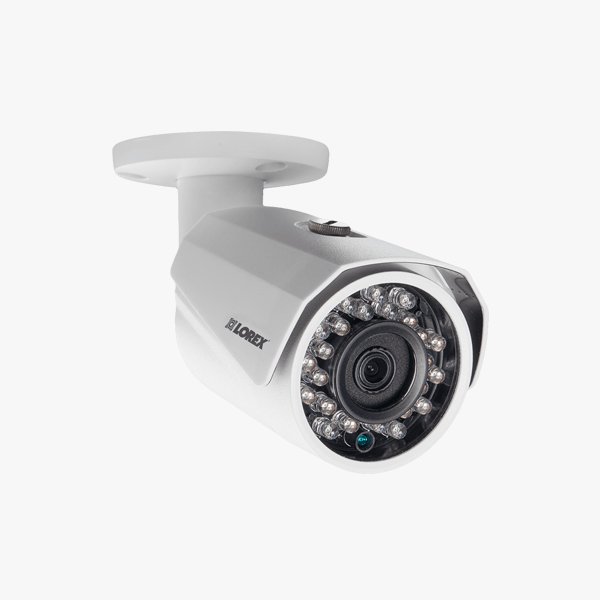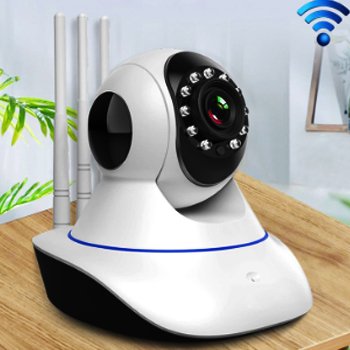Description
A Smart Surveillance Camera with Voice and Wireless Capabilities is a versatile security solution that combines advanced video surveillance features with wireless connectivity and two-way audio. This type of camera is ideal for both home and business security, offering enhanced monitoring and communication features.
Key Features of a Smart Surveillance Camera with Voice and Wireless Capabilities:
High-Definition Video:
Resolution: Typically available in HD (1080p) or higher resolutions (such as 4K), providing clear and detailed video footage.
Wide-Angle Lens: Often features a wide field of view to cover more area and reduce blind spots.
Wireless Connectivity:
WiFi: Connects to your home or office WiFi network, allowing for easy installation and remote access without the need for extensive cabling.
Remote Monitoring: View live video feeds and manage the camera remotely through a mobile app or web interface from anywhere with an internet connection.
Two-Way Audio:
Communication: Equipped with a built-in microphone and speaker to enable two-way audio. This allows you to listen to and communicate with people within the camera’s range.
Use Cases: Useful for interacting with family members, pets, or visitors, and for deterring potential intruders.
Motion Detection and Alerts:
Smart Notifications: Sends real-time alerts to your phone when motion is detected. You can often customize motion detection zones to focus on specific areas and reduce false alerts.
Detection Sensitivity: Adjustable settings to tailor motion detection according to your needs.
Night Vision:
Infrared or Full-Color: Provides clear video in low-light or complete darkness. Infrared night vision is common, but some models offer full-color night vision for better visibility at night.
Cloud and Local Storage:
Cloud Storage: Many cameras offer cloud storage options for saving recorded video footage, which can be accessed remotely. Cloud storage may involve a subscription fee.
Local Storage: Some models support local storage options, such as a microSD card slot, for saving video directly on the camera.
Mobile App Integration:
App Features: The companion app allows you to view live video, communicate via two-way audio, adjust camera settings, and review recorded footage. Most apps are available for iOS and Android devices.
Smart Home Integration:
Compatibility: Integrates with smart home systems like Amazon Alexa, Google Assistant, or Apple HomeKit, enabling voice control and integration with other smart devices.
Automation: Can be part of a home automation system, triggering actions based on camera events (e.g., turning on lights when motion is detected).
Design and Durability:
Indoor and Outdoor Use: Choose a model suitable for your intended environment. Outdoor cameras are weatherproof and designed to withstand various environmental conditions.
Aesthetics: Typically designed to blend with home or office decor, and can be installed discreetly.
Power Options:
Battery-Powered: Offers flexibility in installation but requires periodic recharging or battery replacement.
Wired: Hardwired models provide continuous power and may integrate with existing power sources.
Applications of a Smart Surveillance Camera with Voice and Wireless Capabilities:
Home Security: Monitor your home, interact with family members, and deter intruders with real-time video and two-way communication.
Business Surveillance: Enhance security in offices, stores, or warehouses by monitoring activity and communicating with employees or visitors.
Pet Monitoring: Check on pets when you’re away and interact with them using two-way audio.
Elderly Care: Ensure the safety and well-being of elderly family members with clear video and communication features.
Considerations When Choosing a Smart Surveillance Camera with Voice and Wireless Capabilities:
Video Quality: Ensure the camera provides high-resolution video for clear and detailed footage.
Night Vision: Check the quality of night vision capabilities to ensure effective monitoring in low-light conditions.
Wireless Range: Consider the camera’s WiFi range to ensure it has a strong connection in the intended installation area.
Storage Options: Decide whether you prefer cloud storage, local storage, or both, and be aware of any associated costs.
Integration: Look for compatibility with your existing smart home system if you want integrated functionality.
Power Source: Choose between battery-powered or wired models based on your installation needs and power availability.
If you have specific requirements or need recommendations for particular models, feel free to ask!






Reviews
There are no reviews yet.